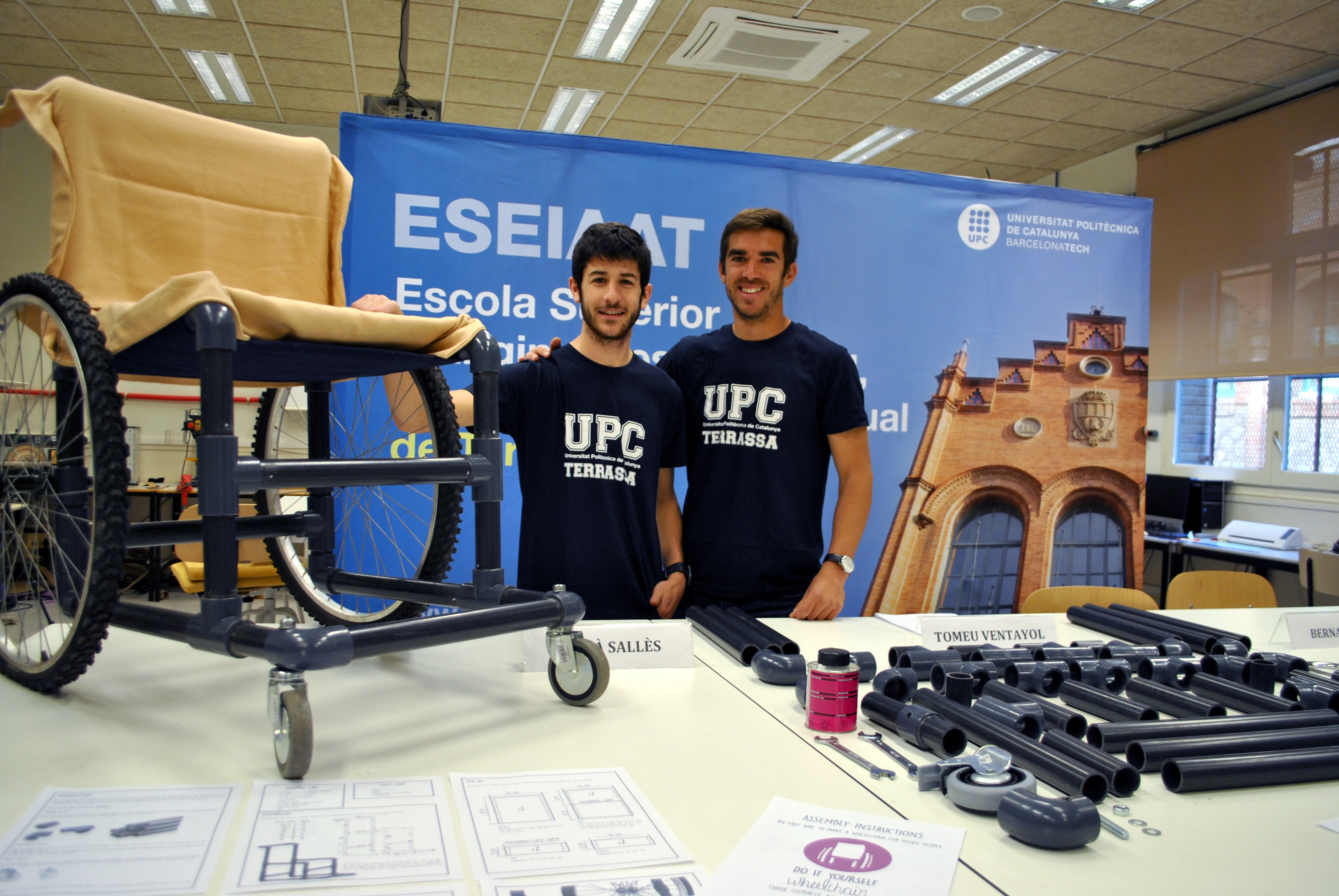Two Catalan students design low cost wheelchair for developing countries
The students at the Universitat Politècnica de Catalunya have designed and built a low cost wheelchair for people in developing countries. The chair is made from bicycle wheels, a supermarket trolley and PVC pipes and can be made in fifteen minutes. The cost is approximately 70 euros, half the conventional cost. The two students made the wheelchair as an NGO in project and they also made a video of how to make it. The NGO is going to spread the tutorial to people in developing countries who need a wheelchair and are not able to afford one.

Barcelona (CNA).- Two students at the Universitat Politècnica de Catalunya have designed and built a low cost wheelchair for people in developing countries. The chair is made from bicycle wheels, a supermarket trolley and PVC pipes and can be made in fifteen minutes. The cost is approximately 70 euros, half the conventional cost. The two students made the wheelchair as an NGO in project and they also made a video of how to make it. The NGO is going to spread the tutorial to people in developing countries who need a wheelchair and are not able to afford one.
Bernat Villa and Adrian Sallés are two students of the degree in Industrial Design Engineering and Product Development at the Universitat Politècnica de Catalunya (UPC). The design of the wheelchair was their graduation project. The idea was to design an inexpensive wheelchair, which is easy to assemble and focused on developing countries. The project was directed by professor Ventayol Tomeu and had the support of the Isidre Esteve foundation, the Red Cross and Esport Solidari Internacional (International Solidarity Sports Foundation), who helped to facilitate the use of the chair in Africa.
‘Do it yourself wheelchair’ is the name the two students gave their wheelchair, designed and built by themselves. The wheelchair is made of plumbing materials and resists all types of terrain and is the result of their final degree in Industrial Design Engineering and Product Development.
The original chair is made of PVC pipes, two bicycle wheels, two supermarket trolley wheels, screws and nuts, with a total cost of 70 euros. The students have developed this design for wheelchair users and developing countries, as they explain: “We used materials which are accessible for everybody, so the idea is that people can build, assemble and disassemble the wheelchair themselves”.
Another virtue of this useful innovation is the assembly time. According to the students, "anyone can assemble and disassemble the chair in fifteen minutes”. “You only have to watch the tutorial that we have developed”, they explain. In addition, there is a new design concept ‘Wheelchair DIY’ which includes two sizes, Standard and Kids. The Kids wheelchair can handle a weight between 15 and 20 kg. That means a child under normal conditions between three and five years old. The chair has the same benefits and the same comfort that provides wheelchair conventional pillows, footrests, a grip to push it, a backrest and wheels.
The two students had three goals when creating the wheelchair; to contribute to the social inclusion of disabled people in third world countries, to improve mobility for people with few resources and to promote the use of own resources to make the chair. Therefore, this project has been included in the program 'Do it yourself' by the Isidre Esteve Foundation, which aims to provide tools to improve the lives of people in Third World countries with the help of technology to promote physical activities and games.
The students are a part of a report on incapacity by the World Health Organization. 70 million people in the world need a wheelchair. Of those, only 15.5% can afford one. The same report states that in India, for example, 47.8% of people with disabilities have to drag themselves, while 38.6% use a cane or crutch and 9.7% has no chance of moving out of bed. 78% of people with motor disabilities treated in this country never have access to a wheelchair.
‘Given this reality,’ explained Bernat and Adrian, ‘we thought that we could contribute our expertise to mitigate these shortcomings and somehow make life easier for people. We work with the Isidre Esteve Foundation to bring our wheelchair to countries that need it, which are mostly African.’ Red Cross organizations and Esport Solidari Internacional were also interested in the wheelchair and are working to get it used in Senegal. Other NGOs that collaborate with the project are the Foundation ACAPS, Medicus Mundi Catalonia, Welfare Sant Joan de Deu, Step by Step Foundation, GRACARE, Association Rostros, Colores y Sueños and the Vicente Ferrer Foundation.